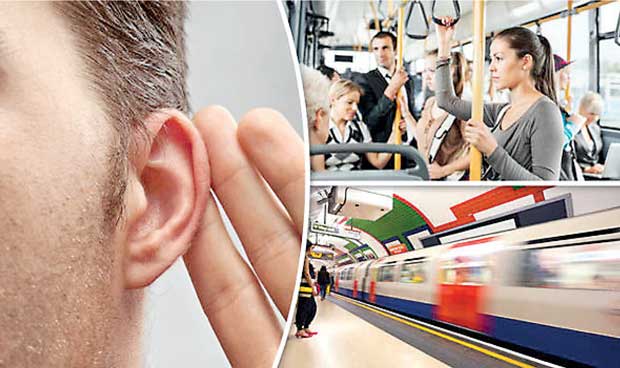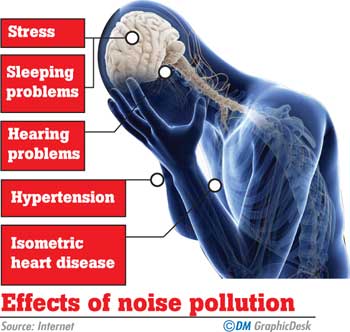Reply To:
Name - Reply Comment

(Reuters Health) - Loud noise exceeding levels that can damage hearing is regularly encountered by commuters using buses, subways and even biking, a Canadian study suggests.
“The effects of noise on our hearing health and overall health has been garnering a lot of recent attention and our team recently commented that commuting in the city, in general, seems to be quite noisy, so we decided to take our noise dosimeters on common commuting routes to see exactly how loud things got,” senior study author Dr. Vincent Lin told Reuters Health by email.
“Those short bursts of sudden noise, if exposed to repeatedly and over a long period of time, may lead to permanent hearing loss,” said Lin, a researcher with the University of Toronto and Sunnybrook Health Sciences Centre.
Although average noise levels measured on commutes around Toronto were within the recommended levels of safe exposure most of the time, bursts of loud noise on both public and private modes of transportation could still place individuals at risk of noise-induced hearing loss, Lin’s team writes in the Journal of Otolaryngology - Head & Neck Surgery.
The World Health Organization estimates that more than 360 million people live with disabling hearing loss and about 16 percent of that damage is the result of noise-induced hearing loss, the authors note.
 Many standards for safe noise exposure have been established, Lin said. The WHO/EPA recommends no more than 15 minutes if the sound is louder than 90 decibels (dB). For sounds around 75 dB, then up to eight hours of exposure is acceptable.
Many standards for safe noise exposure have been established, Lin said. The WHO/EPA recommends no more than 15 minutes if the sound is louder than 90 decibels (dB). For sounds around 75 dB, then up to eight hours of exposure is acceptable.
To measure noise exposure for users of the Toronto transit system, the researchers used small devices called noise dosimeters attached to their shirt collars, about 2 inches (5.08 cm) away from their ears. The devices measure sound levels in so-called A-weighted decibels (dBA), reflecting the actual sound level “weighted” to account for the human ear’s sensitivity to different frequencies.
The study team collected measurements between April and August 2016, inside vehicles and outside or on boarding platforms, for several forms of private and public transportation - subways, buses, streetcars, private automobiles and biking or walking.
They found that average noise level was greater inside subway cars, at about 77 dBA and buses, at about 80 dBA, than inside the streetcar, where it was about 72 dBA. Average noise levels in waiting and boarding areas were higher still, at about 81 dBA for the subway platform and 80 dBA for buses and streetcars.
When the researchers examined how the loudest, or “peak,” noises compared to the EPA thresholds for safe exposure, they found that about 20 percent of the peak noises measured on the subway were greater than the EPA limit of 114 dBA for 4 seconds, and 20 percent of the loudest noises inside streetcars were greater than the EPA limit of 120 dBA for 1 second.
About 85 percent of peak noise measurements taken from bus platforms were greater than 114 dBA, and over half were greater than 120 dBA. All peak noise exposures while riding a bike exceeded 117 dBA, the EPA limit for 2 seconds of exposure, and 85 percent were greater than 120 dBA.
When the authors estimated exposure for an average Toronto commuter who uses public transportation for about 47 minutes, they calculated that 9 percent of the subway noise exposure, 12 percent of bus exposure and 14 percent of biking exposure exceed recommended thresholds.
“I like the study because it points out that we are living in a noisy environment and that constant exposure to high sound levels occurs and has the potential to accumulate and finally lead to damage of the ear and subsequent hearing loss,” said Dr. Claus-Peter Richter, an otolaryngologist at Northwestern University Feinberg School of Medicine in Chicago who wasn’t involved in the study.
Richter suggests having earplugs handy. “Better earplugs run on the order of 12 dollars and should be always either in your ears if it is loud or in your pocket in a case,” he said by email.
“Personally, I wear hearing protection in the movies because of loud peak sound levels. Earplugs reduce your sound levels by about 20 dB and put you in a safe position,” he said.
Those short bursts of sudden noise, if exposed to repeatedly and over a long period of time, may lead to permanent hearing loss